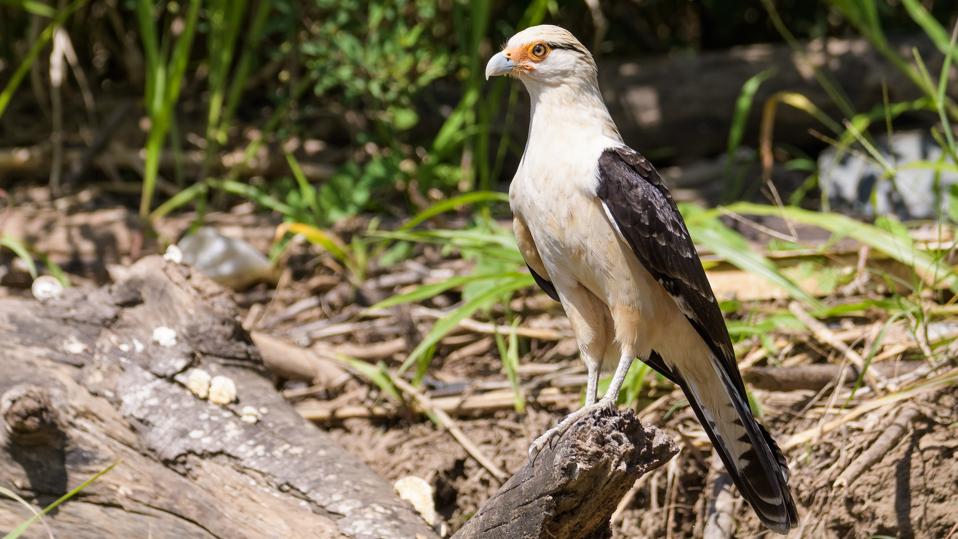Delaware has long been renowned for its stellar birdwatching opportunities, with more than 400 different avian species recorded across the state over the decades—and just a few days ago, the city of Wilmington celebrated the arrival of a bird never before seen on First State soil. On November 19th, local birdwatching groups were flooded with images of a yellow-headed caracara, an eye-catching bird of prey that’s typically found in Central and South America. One of just a few recorded sightings in the United States, this lone raptor has made waves in the Delaware birding community, providing residents with an opportunity to spot a species they may otherwise never encounter.
“This bird flew by, and I knew immediately what it was in the first millisecond. And the second millisecond, I thought ‘that’s absolutely impossible,’” said Lauren Morgens, captain of the replica tall ship Kalmar Nyckel in Wilmington, Delaware. Morgens—an avid birder herself—was one of the first to call attention to the animal, having noticed it during a meeting on Copeland Maritime Center grounds. Surprised by its presence in the Mid-Atlantic, Morgens snapped a few photos and sent them to former American Birding Association president Jeff Gordon for a second opinion. Within hours, the Kalmar Nyckel Foundation parking lot was filled with birders hoping to catch a glimpse of this far-flung visitor.
The appearance of a South American bird in northern Delaware is certainly a surprise, but it’s not outside the realm of possibility. An animal traveling far outside of its native range is referred to as “vagrancy,” with other examples ranging from Corpus Christi’s cattle tyrant to a lone American flamingo spotted last year in Massachusetts. As the yellow-headed caracara is a non-migratory species, it’s theorized that the animal hitched a ride on a cargo ship and traveled up the Atlantic coast before arriving in Wilmington and setting off in search of food.
While the Copeland Maritime Center is best known as the home of the Kalmar Nyckel—a replica of a 1600s-era ship that was used to bring Swedish immigrants from Gothenburg to modern-day Wilmington—the site has embraced its current status as a birding hotspot with a visitor’s guide posted to its public Facebook page. And while nobody could have guessed that a yellow-headed caracara would ever grace its grounds, the bird is a welcome sight for the Kalmar Nyckel Foundation after years of working to restore the surrounding environment and create more welcoming conditions for wildlife.
“We have made significant efforts to make our campus bird-friendly,” says Morgens. In lieu of planting monospecific grass lawns, the organization has worked closely with local company Sarver Ecological to plant indigenous species across the Copeland Maritime Center. And when it comes to watershed restoration, the site is also a target for the Christina-Brandywine River Remediation Restoration Resilience (or CBR4) project, an ambitious initiative that seeks to improve water quality and increase local wildlife populations—and as an added bonus, this bird-friendly environment even offers refuge to the occasional vagrant raptor.
“It’s really been an amazing experience for us to see this go from a contaminated gravel parking lot to this vibrant space filled with birds,” says Morgens. “Now that being said, never in a million years would we have expected a yellow-headed caracara.”

